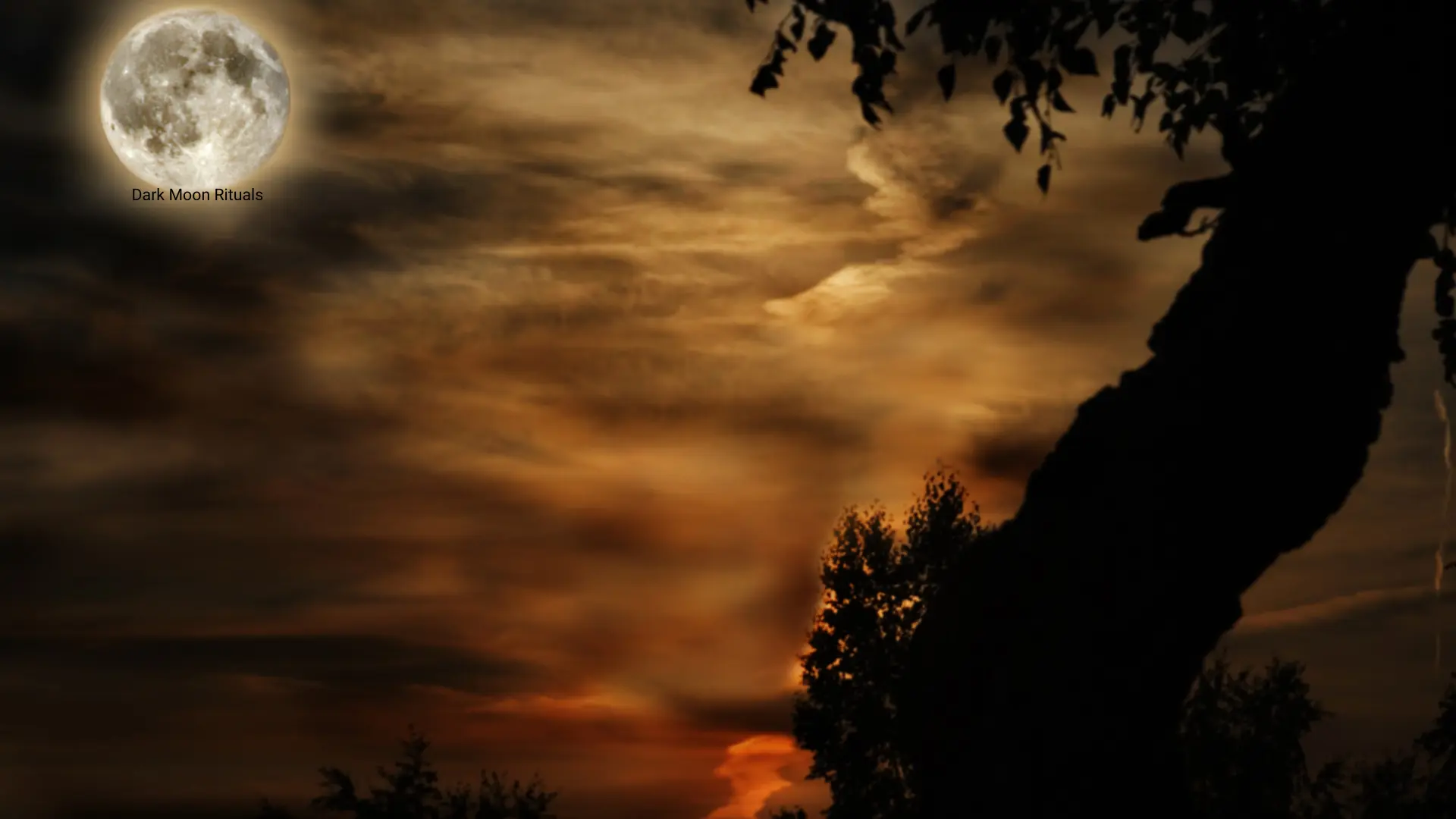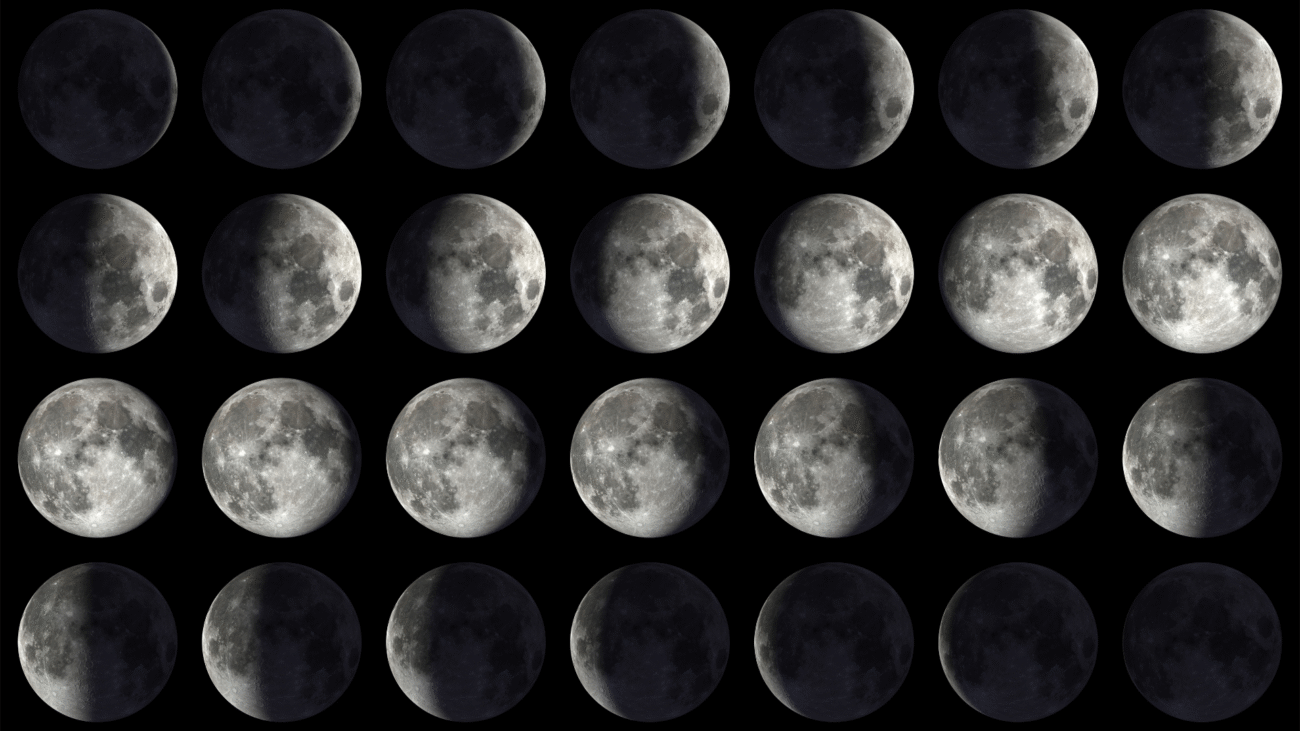Blog
Dark Moon Rituals | Mastering Lunar Phases and Optimal Timing

In lunar traditions, the dark moon is frequently overshadowed by the new moon, yet these phases possess unique qualities that set them apart. For individuals engaging in dark moon rituals, accurate timing is crucial—not only for symbolic alignment but also because it shapes the ritual’s atmosphere and impact. This article delves into the differences among lunar phases, the dark moon’s distinctive role, and effective methods for synchronizing your practices with its brief occurrence.
Key Differences Between the Dark Moon and New Moon
Dark Moon vs. New Moon: What’s the Difference?
The dark moon and new moon may seem similar, but they mark two very different moments in the lunar cycle. The dark moon happens first — a short period lasting about 1.5 to 3.5 days when the moon is completely hidden from view. During this time, the moon sits between the Earth and the Sun, with its shadowed side facing us. The new moon Phases right after, showing a thin crescent of light that signals the start of a new lunar phase. While astronomers often group both under the term “new moon,” many people who follow lunar or lifestyle practices see them as separate energies.
Overview of the Lunar Cycle and the Dark Moon’s Position
Why the Dark Moon Excels for Rituals
As the lunar cycle’s endpoint, the dark moon is ideally suited for practices centered on letting go. Rather than fostering growth or attraction, it supports emptying out to welcome future possibilities.
Various cultures have long valued this phase for deeper work. In Hindu customs, Amavasya—the dark moon—involves fasting, ancestral tributes, and pausing new activities to encourage contemplation. Greek esoteric rites, often dedicated to Hecate at intersections, used this time for private ceremonies on change and renewal. Celtic practices associated it with prophecy and spiritual dialogues, viewing the darkness as a bridge between realms.
Strategies for Timing Dark Moon Rituals
The dark moon’s short span requires careful planning. Use trusted sources such as Time and Date’s lunar tools, phase calendars, or astrology apps to identify its precise onset and conclusion in your area, considering time zone differences. Although some prefer aligning rituals with the exact solar-lunar conjunction, any point within the dark interval is effective. The energy crests shortly before the new moon’s crescent emerges, but a moonless sky on any qualifying night serves well. Do not depend only on eyesight, as overcast conditions can mimic darkness; confirm via apps.
What to Expect During the Dark Moon
These days often bring noticeable shifts. Common experiences include restless sleep, intense dreams, or heightened self-reflection and sensitivity. Motivation might dip, favoring solitude over interaction—which aligns with ritual needs. Responses differ; some sense sharper instincts, while others embrace calm. Variability stems from personal circumstances, but the phase encourages embracing the quiet for inner shifts.
Clarifying Common Timing Errors
Inconsistent language leads to frequent mistakes. “New moon” can denote the crescent, the dark conjunction, or a surrounding period. Calendars vary, too, with discrepancies up to three days between conjunction and visibility. For rituals, seek the genuine dark nights without visible moon. If a “new moon” label coincides with a seen sliver, the dark phase has passed. Note that personal “dark moons” linked to bodily cycles differ from astronomical ones, though both are meaningful.
Tailoring Practices to Lunar Flows
Ritualizing every phase is unnecessary; select those that connect most. Combining dark moon sessions with full moon reviews can form a cycle: identify issues at fullness, then release them in darkness. Phase awareness varies with factors like stress or rest, so adapt accordingly. Regular dark moon check-ins foster a steady pattern for life assessment and adjustment, regardless of attention to other phases.
Options for Non-Ideal Timing
When exact alignment is impossible due to commitments or health, nearby days can substitute. The last quarter provides building release vibes, while early new moon blends ending with starting. Steer clear of waxing or full periods, as their building energy opposes release.
Benefits of Ongoing Phase Tracking
A dedicated journal captures personal reactions, ritual insights, and trends across months. With about 13 cycles yearly, a half-year of records reveals individual patterns, enabling refined approaches. Preferences may shift over time, redirecting focus as insights grow. Embracing the dark moon’s timing and essence empowers practitioners to achieve greater clarity and purpose, elevating this phase into a vital element of intentional rituals.

Conclusion
Ultimately, integrating dark moon rituals into your routine offers a powerful framework for personal growth and renewal. By respecting the lunar cycle’s rhythms and dedicating time to this phase of profound stillness, you cultivate a deeper connection to natural cycles and your inner self. Whether you’re a seasoned practitioner or just beginning, the dark moon invites ongoing exploration, reminding us that true transformation often emerges from moments of quiet surrender. Start with simple observations and build from there— the rewards in balance and insight will unfold with each passing cycle.












